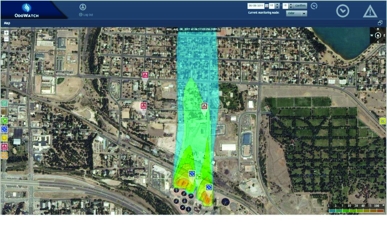Device used to sniff out out industrial emissions
Scientists are developing ‘electronic nose’ sensor technology for measuring and predicting the dispersal of odours from industrial plants into the community.
Odotech, a spin-out from Polytechnique Montréal, is working with clients in the UK, including Yorkshire Water, other waste water treatment plants, and some breweries. The data gathered will help plant managers optimise deployment of scrubbing methods, and time certain operational processes according to the weather.

‘Certainly in North America, 70% of air quality complaints are odour-related, so it’s a real quality of life issue for nearby residents and the wider community,’ said Thierry Pagé, Odotech’s President. ‘Those people, you want them happy, I haven’t seen a lot of plant managers that don’t want to be a good neighbour, and so we enable that, they don’t have to wait for the phonecall that there’s a problem, they are the first ones to know and they can act accordingly.’
Register now to continue reading
Thanks for visiting The Engineer. You’ve now reached your monthly limit of news stories. Register for free to unlock unlimited access to all of our news coverage, as well as premium content including opinion, in-depth features and special reports.
Benefits of registering
-
In-depth insights and coverage of key emerging trends
-
Unrestricted access to special reports throughout the year
-
Daily technology news delivered straight to your inbox











Water Sector Talent Exodus Could Cripple The Sector
Maybe if things are essential for the running of a country and we want to pay a fair price we should be running these utilities on a not for profit...